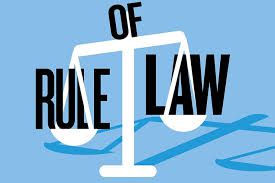Pith and Marrow Doctrine in Patent Infringement Cases
In patent infringement cases, the determination of whether an accused product
infringes upon a patented invention often involves complex legal and technical
analysis. The principle of the 'all elements rule' traditionally governs such
assessments, requiring the accused product to contain every element of the
patented claim for infringement to be established. However, the application of
the pith and marrow doctrine introduces nuances into this analysis, emphasizing
the essence of the patented invention rather than a strict adherence to
individual claim elements. This article delves into the legal and practical
implications of the pith and marrow doctrine, using a recent case before the
Hon'ble High Court of Delhi as a focal point.
Background of the Case:
The subject matter of the dispute revolves around patents held by the plaintiffs concerning brick-making machines. The plaintiffs allege that the defendant's machines bear substantial similarity to theirs, leading to the filing of a patent infringement suit. The defendant, however, asserts the 'all elements rule' as a defense, contending that their product does not replicate every element of the patented claims.
Application of the Pith and Marrow Doctrine:
In granting an interim injunction, the Hon'ble High Court of Delhi shifted the focus from a strict application of the 'all elements rule' to an analysis centered on the pith and marrow of the patented invention. This doctrine emphasizes the core essence or substance of the invention rather than minor variations in individual claim elements. The court highlighted that infringement must be assessed objectively, with the defendant's intentions being immaterial in determining infringement.
Analysis of Essential Elements:
The court's observation regarding the mapping of 'essential elements' underscores the significance of identifying the fundamental aspects of the patented invention. In the case at hand, the differences between the plaintiff's and defendant's machines primarily revolve around the issue of mobility and the mechanisms ensuring it. While superficially appearing as distinct features, closer scrutiny reveals that these differences are integral to the core functionality of the invention. For instance, the plaintiff's integrated cabin facilitates mobility, whereas the defendant's machine requires external connection to a mobile vehicle. However, all aspects related to mobility, including the cabin, steering mechanism, and operation of wheels, are interconnected and essential to the invention's functionality.
Implications for Patent Infringement Cases:
The application of the pith and marrow doctrine in this case demonstrates a departure from strict adherence to individual claim elements towards a holistic assessment of the patented invention's essence. This approach enables courts to prevent defendants from circumventing infringement claims by making trivial modifications to the accused products. By focusing on the substance of the invention, courts can uphold the rights of patent holders and promote fairness in intellectual property disputes.
Conclusion:
The case discussed underscores the importance of the pith and marrow doctrine in patent infringement cases, particularly in evaluating the essence of patented inventions beyond mere claim elements. While the 'all elements rule' remains relevant, the pith and marrow doctrine enriches infringement analysis by considering the overarching functionality and purpose of patented inventions.
Case Title: Snpc Machines Private Limited Vs Mr Vishal Choudhary
Order Date: 05.03.2024
Case No. CS(COMM) 431/2023
Neutral Citation:2024:DHC:1945
Name of Court: Delhi High Court
Name of Hon'ble Judge : Anish Dayal H.J.
Disclaimer:
This article is meant for informational purposes only and should not be construed as substitute for legal advice as Ideas, thoughts, views, information, discussions and interpretation perceived and expressed herein are are subject to my subjectivity and may contain human errors in perception, interpretation and presentation of the fact and issue of law involved herein.
Written By: Advocate Ajay Amitabh Suman, IP Adjutor - Patent and Trademark Attorney
Email: [email protected], Ph no: 9990389539
Background of the Case:
The subject matter of the dispute revolves around patents held by the plaintiffs concerning brick-making machines. The plaintiffs allege that the defendant's machines bear substantial similarity to theirs, leading to the filing of a patent infringement suit. The defendant, however, asserts the 'all elements rule' as a defense, contending that their product does not replicate every element of the patented claims.
Application of the Pith and Marrow Doctrine:
In granting an interim injunction, the Hon'ble High Court of Delhi shifted the focus from a strict application of the 'all elements rule' to an analysis centered on the pith and marrow of the patented invention. This doctrine emphasizes the core essence or substance of the invention rather than minor variations in individual claim elements. The court highlighted that infringement must be assessed objectively, with the defendant's intentions being immaterial in determining infringement.
Analysis of Essential Elements:
The court's observation regarding the mapping of 'essential elements' underscores the significance of identifying the fundamental aspects of the patented invention. In the case at hand, the differences between the plaintiff's and defendant's machines primarily revolve around the issue of mobility and the mechanisms ensuring it. While superficially appearing as distinct features, closer scrutiny reveals that these differences are integral to the core functionality of the invention. For instance, the plaintiff's integrated cabin facilitates mobility, whereas the defendant's machine requires external connection to a mobile vehicle. However, all aspects related to mobility, including the cabin, steering mechanism, and operation of wheels, are interconnected and essential to the invention's functionality.
Implications for Patent Infringement Cases:
The application of the pith and marrow doctrine in this case demonstrates a departure from strict adherence to individual claim elements towards a holistic assessment of the patented invention's essence. This approach enables courts to prevent defendants from circumventing infringement claims by making trivial modifications to the accused products. By focusing on the substance of the invention, courts can uphold the rights of patent holders and promote fairness in intellectual property disputes.
Conclusion:
The case discussed underscores the importance of the pith and marrow doctrine in patent infringement cases, particularly in evaluating the essence of patented inventions beyond mere claim elements. While the 'all elements rule' remains relevant, the pith and marrow doctrine enriches infringement analysis by considering the overarching functionality and purpose of patented inventions.
Case Title: Snpc Machines Private Limited Vs Mr Vishal Choudhary
Order Date: 05.03.2024
Case No. CS(COMM) 431/2023
Neutral Citation:2024:DHC:1945
Name of Court: Delhi High Court
Name of Hon'ble Judge : Anish Dayal H.J.
Disclaimer:
This article is meant for informational purposes only and should not be construed as substitute for legal advice as Ideas, thoughts, views, information, discussions and interpretation perceived and expressed herein are are subject to my subjectivity and may contain human errors in perception, interpretation and presentation of the fact and issue of law involved herein.
Written By: Advocate Ajay Amitabh Suman, IP Adjutor - Patent and Trademark Attorney
Email: [email protected], Ph no: 9990389539
Law Article in India
Legal Question & Answers
Lawyers in India - Search By City
LawArticles
How To File For Mutual Divorce In Delhi

How To File For Mutual Divorce In Delhi Mutual Consent Divorce is the Simplest Way to Obtain a D...
Increased Age For Girls Marriage

It is hoped that the Prohibition of Child Marriage (Amendment) Bill, 2021, which intends to inc...
Facade of Social Media

One may very easily get absorbed in the lives of others as one scrolls through a Facebook news ...
Section 482 CrPc - Quashing Of FIR: Guid...

The Inherent power under Section 482 in The Code Of Criminal Procedure, 1973 (37th Chapter of t...
The Uniform Civil Code (UCC) in India: A...

The Uniform Civil Code (UCC) is a concept that proposes the unification of personal laws across...
Role Of Artificial Intelligence In Legal...

Artificial intelligence (AI) is revolutionizing various sectors of the economy, and the legal i...








Please Drop Your Comments